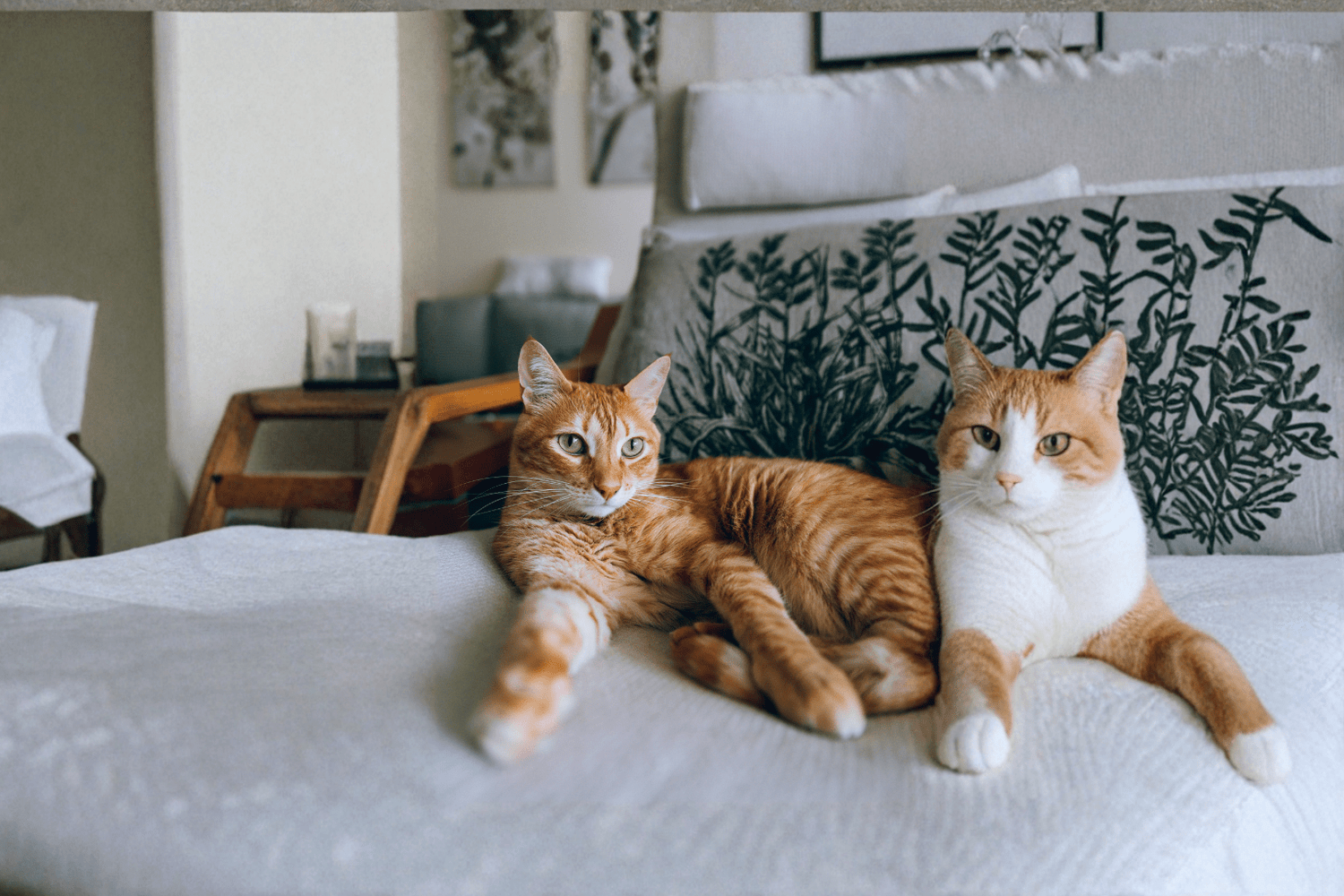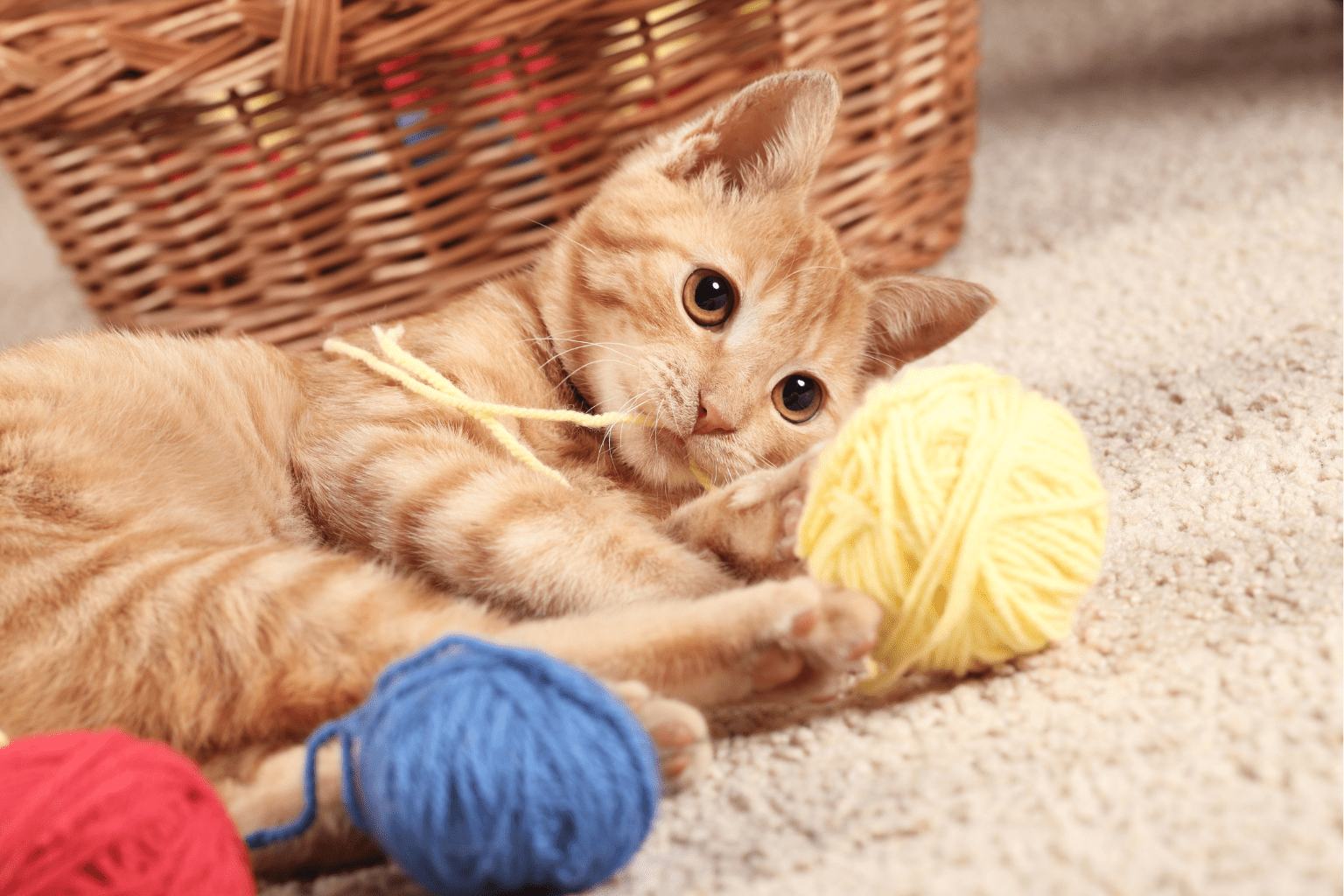Key Takeaways
- Safe fruits for cats differ significantly from those safe for dogs and humans.
- Choosing natural treats for cats requires careful consideration to ensure their safety.
- Sharing fruits with cats involves understanding specific dietary rules unique to felines.
- Pet owners should prioritize their cats' health when selecting natural treats.
Table of Contents
- What Does "Safe Fruits for Cats" Really Mean?
- Why Offer Fruits to Cats? Nature's Support (Not the Main Meal)
- Which Fruits Are Cat-Approved? The Complete, Practical List
- How to Prepare and Serve Fruits the Safe Way
- Signs Your Cat Didn't Agree With That Fruit – What to Watch For and What to Do
- The Science Behind Safe Fruit Choices for Cats
- Apples vs. Pears, Bananas vs. Berries – The Great Cat Treat Smackdown
- Fruit Treats for Every Cat – Choosing For Age, Tummy, and Taste
- Real Stories, Real Relief – Our Community's Fruit Successes
- Homemade Fruit-Based Treats for Cats – Safe & Fun DIY Recipes
- Nature's Snack, BestLife4Pets Support – When Natural Meets Nurturing
- Your Cat's Fruit Journey – Safe, Simple, Supported
Safe Fruits for Cats: Complete Natural Treat Guide
As a lifelong animal lover who's navigated countless treat decisions with my Border Collie mix Tango, I understand the careful balance between wanting to share nature's goodness with our pets while keeping them completely safe. When it comes to safe fruits for cats, the rules are different from dogs, and dramatically different from humans.
Cats are obligate carnivores, meaning their bodies are designed to thrive on meat. Unlike us, they don't need fruit for nutrition. However, certain fruits can serve as occasional, tiny treats that support hydration and provide gentle fiber, when prepared correctly and given sparingly.
If your cat struggles with allergies or sensitivities, it's important to consider natural remedies that support immune health alongside any dietary changes. For cats with digestive issues, digestive health solutions can help maintain comfort when introducing new treats.
What Does "Safe Fruits for Cats" Really Mean?
When we say a fruit is "safe" for cats, we mean it's non-toxic and won't cause immediate harm when properly prepared. This doesn't mean it's necessary or even beneficial, just that it won't hurt your feline friend in small amounts.
Safe preparation is crucial: removing all seeds, pits, stems, and often peels. Even "safe" fruits become dangerous when these parts remain. Seeds from apples contain cyanide compounds, while pits pose choking hazards and toxic risks.
The "10% rule" applies here, treats should never exceed 10% of your cat's daily calories. For most cats, this means a piece no larger than your thumbnail, offered occasionally. Think of fruit as you would a special holiday dessert for yourself: delightful in tiny amounts, problematic as a regular meal.
Why Offer Fruits to Cats? Nature's Support (Not the Main Meal)

While cats don't need fruit nutritionally, small portions can offer gentle support for specific situations. The high water content in melons provides extra hydration for cats who don't drink enough water. The fiber in properly prepared apple or pear can support digestive regularity in senior cats.
Key benefits include: natural hydration boost, gentle fiber for digestive support, and low-calorie treat options for overweight cats. Some fruits like blueberries contain antioxidants that may support the body's own healing processes, though cats get these compounds more effectively from their species-appropriate diet.
Remember, we're talking about support, not treatment. Fruits may help maintain comfort and wellness, but they're never a substitute for proper veterinary care or a balanced feline diet.
Which Fruits Are Cat-Approved? The Complete, Practical List
| Fruit | Prep Required | Serving Size | Key Benefit |
|---|---|---|---|
| Apples | Remove seeds, core; peel optional | Thumbnail piece | Gentle fiber |
| Blueberries | Wash thoroughly | 2-3 berries | Antioxidants |
| Cantaloupe | Remove rind, seeds | 1-2 small cubes | Hydration |
| Bananas | Peel, slice thin | One thin slice | Potassium |
| Strawberries | Remove stem, leaves | Half berry, chopped | Vitamin C |
Serving guidelines: Start with half the recommended amount for first-time tries. Wait 24 hours between new fruit introductions to monitor for any digestive upset. Senior cats or those with sensitive stomachs should receive even smaller portions.
Each fruit requires specific preparation. Melons need complete rind and seed removal. Berries must be stem-free and thoroughly washed. Stone fruits like peaches require pit removal and peeling. Never serve any fruit with its natural packaging, seeds, pits, and tough skins can cause serious problems.
How to Prepare and Serve Fruits the Safe Way
Essential preparation steps: Wash all fruits thoroughly, even organic ones. Remove any seeds, pits, stems, or tough peels. Cut into pieces smaller than your cat's normal kibble to prevent choking. For picky eaters, try mashing soft fruits like banana or melon into a paste.
Serving Size Guide: Kittens get ½ teaspoon maximum; adult cats get 1-2 teaspoons maximum; senior cats get 1 teaspoon maximum. Never offer fruit daily, twice weekly is plenty.
For cats who turn their noses up at visible fruit pieces, try the "stealth method": mash a tiny amount into their regular wet food or freeze small pieces for a different texture experience. Always introduce new treats when your cat is calm and comfortable. Even safe fruits can cause digestive upset if your kitty's tummy isn't ready for something new.
Signs Your Cat Didn't Agree With That Fruit – What to Watch For and What to Do

Watch for these telltale signs within 2-12 hours of offering fruit: vomiting, loose stool or diarrhea, excessive drooling, hiding behavior, or unusual restlessness. Some cats may also paw at their mouth or show reduced appetite. These reactions don't mean your cat is seriously ill – they're usually just saying "that didn't work for me."
Quick Response Plan: Remove all fruit treats immediately, offer fresh water, and return to their regular diet. If symptoms persist beyond 12 hours or worsen, contact your veterinarian.
Rachel, one of our community heroes managing 30+ rescue cats, learned this lesson when her foster Siamese tried freeze-dried mango for the first time. Within hours, he had loose stool and seemed uncomfortable. She immediately stopped all treats, offered plenty of water, and stuck to his regular food for two days. By day three, he was back to his playful self. "Now I introduce any new treat on a Friday," Rachel shares, "so I can monitor over the weekend."
The Science Behind Safe Fruit Choices for Cats
Understanding why certain safe fruits for cats work while others don't comes down to feline biology. As obligate carnivores, cats lack many enzymes humans use to process plant matter efficiently. Their digestive systems evolved to break down proteins and fats, not the complex sugars and fiber found in fruits.
Veterinary nutritionists explain that cats can't taste sweetness the way we do – they're missing the genetic machinery for sweet taste receptors. This means when your kitty shows interest in your apple, they're likely drawn to texture or moisture content, not sugar. Their shorter digestive tract also means less time to process fiber, which is why even safe fruits must be offered in tiny portions.
Research from veterinary colleges shows that cats can benefit from small amounts of certain fruits for hydration and fiber, but their bodies handle sugars differently than ours. What seems like a "healthy snack" to us might create digestive stress for them. Always consult your veterinarian before introducing fruits if your cat has diabetes, kidney issues, or takes any medications – their expert guidance ensures you're supporting your pet's unique health needs safely.
For more on feline nutrition and what foods are best avoided, see best and worst human foods for cats.
Apples vs. Pears, Bananas vs. Berries – The Great Cat Treat Smackdown
Not all safe fruits for cats are created equal. Some require more prep work, others pack more natural sugars, and a few clearly win the "cat approval" contest. Here's how popular fruit choices stack up when you're deciding what to offer your feline family member.
| Fruit Matchup | Prep Effort | Sugar Content | Cat Appeal | Winner for Cats |
|---|---|---|---|---|
| Apples vs. Pears | Both need core/seed removal | Pears slightly higher | Apples win on crunch | Apples (easier to portion) |
| Bananas vs. Strawberries | Banana: just slice | Strawberry: remove tops | Banana higher | Strawberries more interesting texture | Strawberries (lower sugar, more vitamins) |
| Cantaloupe vs. Cucumber | Both need seed removal | Cantaloupe much higher | Cantaloupe wins on taste | Cucumber (hydration without sugar spike) |
The clear pattern? Lower sugar, easier prep, and interesting textures make the best cat treats. Wendy discovered this when her tabby ignored banana slices but went crazy for frozen blueberry halves. Meanwhile, Gary found his senior Lab preferred soft cantaloupe over crunchy apple pieces – every pet has preferences, just like us.
When comparing fresh fruit to commercial cat treats with fruit flavoring, fresh wins hands-down. You control the ingredients, portion size, and quality. Plus, you're avoiding artificial flavors and preservatives that might upset sensitive tummies.
If your cat has joint discomfort or is a senior, you may want to explore joint pain relief options that support mobility alongside healthy treats.
Fruit Treats for Every Cat – Choosing For Age, Tummy, and Taste

Just like people, cats have individual needs based on their age, health, and preferences. The key is matching the right safe fruits for cats to your specific furry family member's situation.
For sensitive stomachs: Stick with gentle options like small blueberry pieces or cucumber slices. These provide fiber and hydration without overwhelming delicate digestive systems. Avoid high-acid fruits like pineapple or anything with tough skins.
For senior cats: Focus on hydration-rich, easy-to-chew options like seedless watermelon bits or soft cantaloupe pieces. Older kitties often need extra moisture in their diet, and these fruits deliver water content along with gentle fiber. Cut pieces extra small to prevent choking.
For overweight cats: Choose lower-sugar options like blackberries, raspberries, or cucumber. These provide natural sweetness with minimal calories. Serve these in tiny portions, just 2-3 berries at a time.
For all cats: Start with single-ingredient options and observe for 24 hours before offering again. If your cat shows any digestive upset, discontinue immediately and consult your vet.
For more tips on supporting your cat's kidney health, see 7 tips for preventing kidney disease in cats.
Real Stories, Real Relief – Our Community's Fruit Successes
Nothing beats hearing from fellow pet parents who've navigated the world of safe fruits for cats successfully. Here are some heartwarming wins from our BestLife4Pets community.
Bailey's Blueberry Breakthrough: Gary, a devoted Lab dad, wanted to find gentle treats for his senior tabby, Bailey, who had developed a sensitive stomach. "I started with just half a blueberry, mashed up with Bailey's dinner," Gary shares. "Within a week, he was actually seeking out his meals again, and his digestion seemed more comfortable."
Luna's Melon Magic: Wellness enthusiast Wendy discovered that her rescue cat Luna loved tiny cantaloupe cubes during hot summer days. "I was worried about hydration since Luna barely touched her water bowl," Wendy explains. "The melon pieces became her favorite way to get extra moisture, and I felt good knowing she was getting natural vitamins too."
Stealth Success with Mango: Fiona, managing her diabetic cat Oscar, needed creative ways to make medication time less stressful. "I'd hide Oscar's supplements in a tiny piece of mashed mango mixed with his wet food. He never knew the difference, and I loved that the fruit was naturally sweet without added sugars."
These stories remind us that every cat is unique. What works beautifully for one might not appeal to another, and that's perfectly normal. The key is patience, observation, and celebrating the small wins along the way.
Homemade Fruit-Based Treats for Cats – Safe & Fun DIY Recipes
Creating your own fruit treats gives you complete control over ingredients and portions. These simple recipes take under 5 minutes and use safe fruits for cats in perfect serving sizes.
Simple Blueberry Puree
Mash 3-4 fresh blueberries with a fork until smooth. Mix ½ teaspoon of puree with 1 tablespoon of your cat's regular wet food. Store leftover puree in the refrigerator for up to 48 hours.
Hydrating Melon-Chicken Topper
Dice 1 tablespoon of seedless cantaloupe into tiny pieces. Combine with 2 tablespoons of plain, cooked chicken (no seasonings). This works especially well for senior cats who need extra hydration and protein.
Frozen Fruit Ice Cubes
Blend ¼ cup of safe fruit (try watermelon or cucumber) with ½ cup of water. Pour into ice cube trays and freeze. Offer one small cube on hot days, most cats enjoy licking the melting fruit water.
Safety Reminder: Never add honey, artificial sweeteners, or dairy to homemade cat treats. These ingredients can cause digestive upset or toxicity. Stick to single fruits and plain proteins only.
Store all homemade treats in the refrigerator and use within 2 days. If you notice any changes in smell or texture, discard immediately.
For more inspiration on healthy treats and supplements, browse our natural cat supplements for treating common health issues in cats and kittens.
Nature's Snack, BestLife4Pets Support – When Natural Meets Nurturing

While fresh fruits can be wonderful occasional treats, we understand that busy pet parents sometimes need reliable, pre-made options that deliver consistent quality and peace of mind.
Our BestLife4Pets approach focuses on gentle, natural support that works alongside your cat's regular diet. When you choose our carefully crafted pellet remedies, you're getting the benefits of nature's wisdom without the guesswork of preparation, portion control, or storage concerns.
Perfect for sensitive situations: Our pellets work beautifully for cats who need stealth dosing, have unpredictable appetites, or when you're managing multiple pets with different needs. Unlike fresh fruits that require careful prep and have short shelf lives, our remedies maintain their potency and are always ready when your cat needs support.
Every BestLife4Pets purchase supports our mission to help more pets live naturally healthier lives. We're not just about products, we're about building a community where pet parents feel confident, informed, and supported in their journey toward natural wellness.
Cat health product bundles are a convenient way to address multiple needs, from immunity to digestion, in one easy step.
Remember: Our remedies are designed to support your cat's natural healing processes, never to replace professional veterinary care. Always consult your vet for any health concerns.
For authoritative information on feline nutrition, visit Cornell Feline Health Center's feeding your cat guide.
Your Cat's Fruit Journey – Safe, Simple, Supported
Understanding safe fruits for cats opens up a world of natural treat possibilities while keeping your feline friend healthy and happy. The key takeaways are beautifully simple: start small, prepare properly, and always observe your cat's response.
Remember that cats are obligate carnivores first, fruits should only complement their protein-rich diet, never replace it. Whether you choose fresh apple slices, homemade blueberry puree, or trusted natural supplements, the goal remains the same: supporting your cat's wellbeing through nature's gentle offerings.
Trust your instincts as a caring pet parent, and for more on the essentials of feline wellness, see our guide on essential for cats. For further reading on nutritional requirements, you can also consult the Merck Veterinary Manual's nutritional requirements of small animals.
Frequently Asked Questions
What fruits are considered safe for cats, and how should they be prepared before offering?
Safe fruits for cats include peeled apples, blueberries, and cantaloupe. Always remove seeds, pits, stems, and peels before offering, and serve in small, bite-sized portions to avoid digestive issues.
Why is it important to limit fruit treats to only 10% of a cat's daily calorie intake?
Limiting fruit treats to 10% of a cat's daily calories helps prevent nutritional imbalance and digestive upset, since cats are obligate carnivores and their main diet should be meat-based.
How can fruits like melons and apples support a cat's hydration and digestive health?
Fruits like melons and apples provide gentle fiber and moisture, which can support hydration and help maintain healthy digestion when given in small, appropriate amounts.
What signs should I watch for to know if my cat is having an adverse reaction to a fruit treat?
Watch for vomiting, diarrhea, excessive drooling, or changes in behavior after offering fruit. If any of these occur, discontinue the treat and consult your veterinarian.



